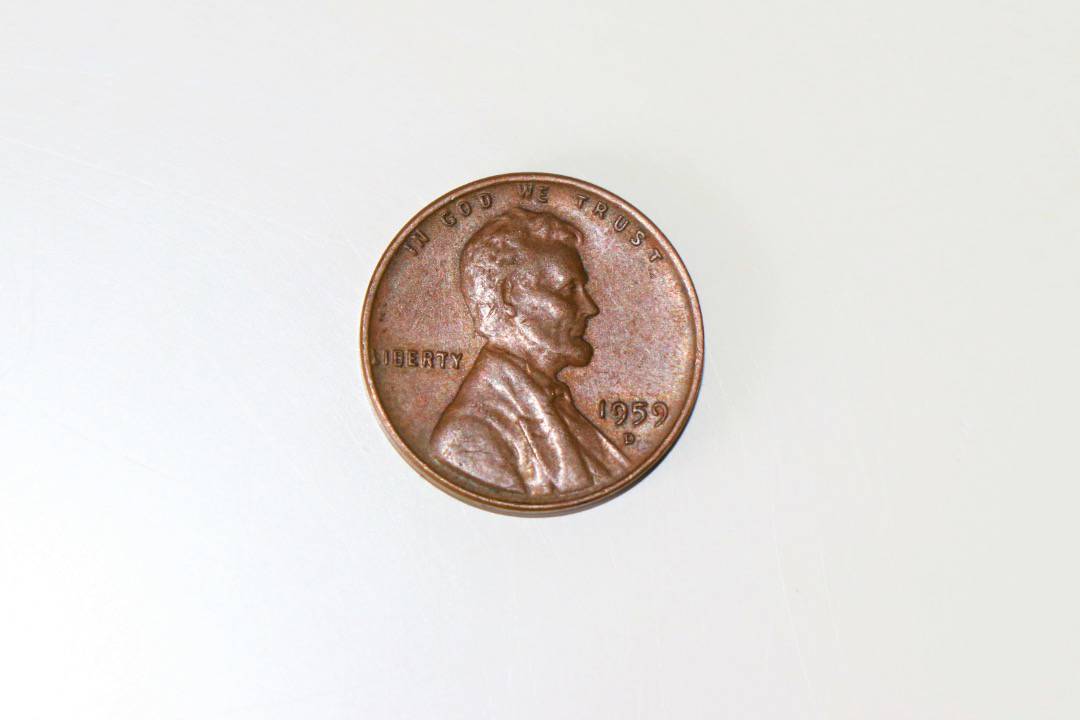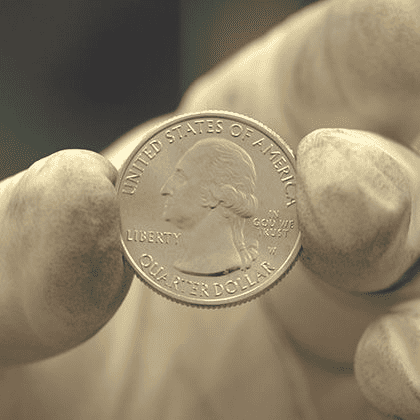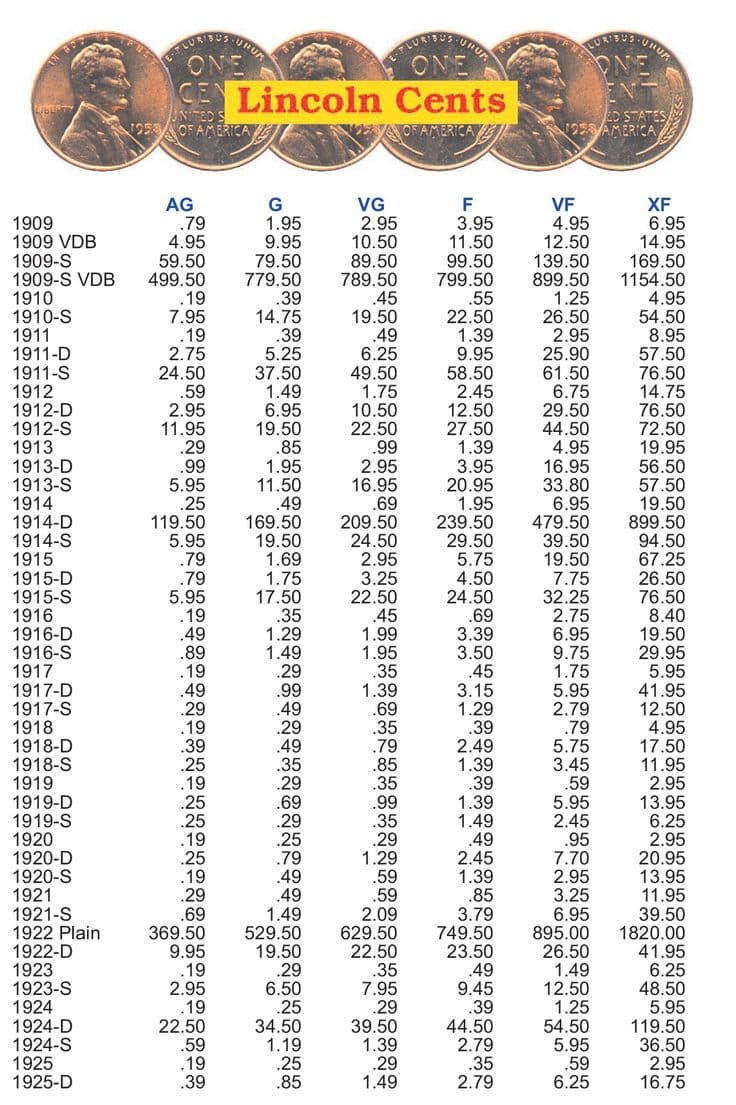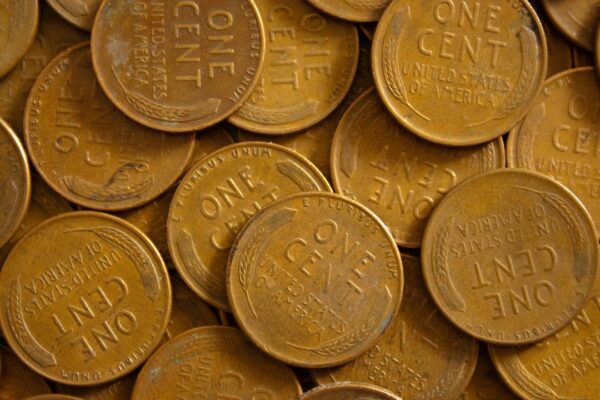The 1950s holds a treasure trove for coin collectors. We’re zeroing in on a little slice of American history – the 1950 Lincoln wheat penny. They’re more than just spare change, especially since the Philadelphia Mint mints it.
They’re a window into the past and a potential goldmine for collectors.
The charm of the 1950 Lincoln wheat cents lies not just in their age but in their craftsmanship. With Abraham Lincoln’s stoic profile gracing the obverse and the classic wheat ears design on the reverse, these pennies symbolize Americana.
But here’s where it gets interesting. Among these coins, those struck at the San Francisco Mint with the coveted “S” mint mark carry a special allure.
Not only that, but the condition is king in coin collecting. And a 1950 wheat penny in excellent condition or better, especially those in certified mint state, can fetch a pretty penny.
So, why are these 1950 wheat pennies considered potential hidden gems? Let’s discover why specific editions of these coins are precious to collectors. At the end of the article, you should sift through your change jar more carefully.

Credits: @coinvaluelookup / Pinterest
Key Takeaway
- Wheat pennies like the 1950 edition feature iconic designs, with Abraham Lincoln on one side and wheat stalks on the other, making them appealing to coin collectors.
- The 1950-S wheat penny, minted in San Francisco, is particularly valuable and sought-after due to its rarity and origins.
- Condition is critical – a coin in mint or uncirculated condition can be exponentially more valuable than one that is damaged or worn.
- With the right characteristics, some exceptional 1950 wheat pennies have sold for premiums at auctions, so examining your coins closely is worthwhile.
Identifying a 1950 Wheat Penny
If you started rummaging through your change and wondered if any of those coins could be worth more than face value, you’re in the right place. Today, let’s talk about the 1950 Wheat Penny, which isn’t just any old penny; it has the potential to be a small treasure.
Wheat Penny Design and Face Value
The 1950 Wheat Penny, part of the Lincoln cents collection, carries a lot of history in its small frame. We can easily recognize these pennies through their unique design.
On the obverse or front side, you’ll see the profile of Abraham Lincoln. Next to Lincoln’s image, the word “LIBERTY” appears, and the phrase “IN GOD WE TRUST” arches over his head. The date, 1950, is prominently displayed, marking the year of minting.
Despite its potential value to collectors, the face value of this coin remains just one cent. However, it can be worth much more to the right collector or in the proper condition.
Distinguishing Features like Wheat Stalks
What sets the 1950 Wheat Penny apart from standard coins are the iconic wheat stalks engraved on the reverse or back side.
These stalks flank the words “ONE CENT” and “UNITED STATES OF AMERICA.” The phrase “E PLURIBUS UNUM” caps the design at the top.
These wheat stalks aren’t just decorative. They symbolize prosperity and abundance, making the coin instantly recognizable to collectors and history buffs.
Images of Obverse and Reverse Sides
Visual identification is vital when you’re trying to spot a 1950 Wheat Penny. As mentioned earlier, we can find Abraham Lincoln on the obverse.
However, he should be looking to the right, and this symbolizes the strength and resilience of the United States.
The reverse showcases those two wheat stalks we discussed, creating a frame around the central inscriptions. This design is what earned these pennies the nickname “Wheat Pennies.”
So, if you come across a penny with these descriptions, look closer – you might have found something special.
1950-S Wheat Penny – The Most Valuable
The 1950-S Wheat Penny stands out in numismatics for a few reasons. Minted in San Francisco, this version of the Lincoln Wheat Penny has a few unique features that catch the eye of collectors.
The “S” mint mark, found just below the date on the obverse of this coin (the side with Lincoln’s head), signifies its San Francisco origins. But it’s not just about where it was made.
This penny is sought after for its rarity and the stories it carries from post-war America. With only a limited number minted, finding one in good condition can be like striking gold for coin collectors.
Mint Marks to Look For from the Philadelphia, Denver, and San Francisco Mints

Lincoln Wheat Pennies were produced at three different mints.
Each mint had its own set of coins yearly, with the San Francisco mint’s 1950-S Wheat Penny being particularly coveted. When checking your change, look for these mint marks on the obverse side of the coin, just below the date.
No mint mark means it’s from Philadelphia, a “D” indicates Denver, and an “S” is the mark of the San Francisco mint.
Condition Ratings: EF, AU, UNC Quality Examples
As I’ve said, the condition of a 1950-S Wheat Penny dramatically affects its value.
Collectors use terms like EF (for Extremely Fine condition), AU (Almost Uncirculated), and UNC (Uncirculated) to describe the quality of a coin.
An EF coin shows light wear on only the highest points, AU coins have slight wear on the design’s highest parts, and UNC coins show no wear. The better the mint condition, the higher the value.
A minor flaw can mean a significant price difference, so it’s worth getting familiar with these ratings. Keeping an eye on coin price charts and staying updated with free numismatic news can also help you gauge the current value of your coins.
Checking Your 1950 Wheat Pennies
If you’ve found a 1950 Wheat penny, here is what you can do when checking them.
Inspect Coins for Wear or Damage
Look for signs of wear, especially on Lincoln’s head and the top arch of the coin. Coins in average condition might still fetch more than face value. But those in uncirculated condition or with minimal wear can command higher premiums.
Also, check for damage like scratches or corrosion, which can significantly decrease a coin’s value. Coins in similar condition to when they were first minted are the real winners here.
Use Scales, Magnets, and XRF Scanners to Test Coins

Credits: @usmint / Pinterest
You can use a few handy tools to verify your penny’s authenticity and composition.
A simple scale can help you check the coin’s total mass to see if it matches the standard weight of a 1950 wheat penny. Grab a magnet while you’re at it; genuine pennies of this era won’t stick to it since they’re made of copper and not magnetic.
For tech-savvy folks, an XRF scanner can provide detailed information about the coin’s metal content, ensuring it matches what was used in 1950.
Using these tools can help weed out any fakes or altered coins.
Grading Process to Officially Authenticate and Certify Coins
If you’ve got a precious piece, consider getting it officially graded. This process involves sending your coin to a reputable grading service. Here, experts will inspect it for authenticity, condition, and other factors that affect its value.
They’ll give it a grade, encapsulate it in a protective holder, and provide a certificate of authenticity. While this can cost a bit, it’s worth it for valuable coins, as a grade can significantly boost their value.
Plus, it adds to the coin’s appeal for collectors, potentially fetching a record price if you decide to sell.
The Value of 1950 Wheat Pennies
Several factors come into play regarding the value of a 1950 Wheat Penny.
First off, the condition is king. A penny in fine grade might fetch a modest sum, but one in uncirculated condition could be worth significantly more.
Then there’s the mint mark location – pennies minted in different places, like the branch mint in San Francisco (look for that “S” mint mark). This mint coin can have higher value due to lower production numbers.
Lastly, the copper alloy used before World War II significantly increased its appeal as metal compositions changed in later years.
All these elements combine to set the stage for potentially higher value.
Price Charts Showing Fair Market Value in Different Conditions

Credits: @OutlawCoinUniversity / Pinterest
Understanding the fair market value of a 1950 Wheat Penny can feel like decoding a mystery, but price charts are here to help. These charts break down the penny’s worth based on condition.
For example, a 1950 penny without a mint mark can command a nice little sum in uncirculated condition. Meanwhile, the same penny in a lower grade might be worth just a few cents over its face value.
These precise spot prices clearly guide collectors on what to expect for their pennies.
Record Sales and Premiums Paid for Rare Specimens
Let’s discuss the real jackpot – the record sales and premiums paid for those rare specimens. While your average 1950 Wheat Penny holds modest value, there are those exceptional few that collectors covet.
For instance, the famous 1909-S VDB penny is known for its rarity and historical significance. While not 1950, it sets a precedent for how specific key dates and rarities within the Wheat Penny series can reach astronomical sums at auction.
For the 1950 penny, especially those rare uncirculated coins with unique characteristics or errors, premiums can soar, turning a small change into a significant windfall.
Selling Your 1950 Wheat Pennies
Selling your precious 1950 wheat pennies to auctions and dealers and directly selling to collectors is possible. And each route has its perks.
Auctions, especially those specializing in rare coins, can get your penny in front of enthusiastic bidders, potentially driving up the price. Dealers are a quicker option, offering expertise and instant transactions, though they might pay a bit less to make a profit.
Then there’s selling directly to collectors, which could fetch a higher price if you find someone hunting for that exact coin. The key? Research and compare to find the best fit for your penny-selling adventure.
Calculating Melt Value as a Bare Minimum Price
Every coin has its melt value – the bare minimum value based on the metal it’s made from.
The melt value might sound like little for our 1950 wheat penny, which isn’t made from precious metals like silver or gold. But it’s a starting point.
The real treasure lies in its collectible value, which can soar beyond the melt value.
Online resources can help you understand the different scales of condition and rarity that boost this value. That way, you can ensure you don’t sell your rare coin for less than it’s worth. If you’re curious about how much is a 1950 $7 bill worth, research is essential. Delving into the historical context and rarity of such an unusual denomination will help you determine its true value before making any transactions..
Timing Sales During Periods of High Demand

Timing is everything, especially in the world of coin collecting. Just like stocks, the value of rare coins can ebb and flow in market volatility. Keeping an eye on the market and choosing to sell during a peak in demand can mean the difference between a good payout and a great one.
Economic factors, collector trends, and even anniversaries related to the coin’s history can all influence demand.
So, if you’re not in a rush, it might be worth waiting for that perfect storm. And I’m talking about when collectors are clamoring for a 1950 wheat penny like yours.
Additional Resources
Coin Publications and News Sites for Research
Coin publications and news sites are like gold mines for info on everything from the U.S. Mint’s latest releases to in-depth articles on that steel penny.
These websites offer a wealth of knowledge, including details on coin values, eye appeal, and even rare finds like proof pennies.
They can give you a rundown on what makes a Denver mint coin different from one with an ‘S’ standing for San Francisco. Dive in, and you’ll emerge a mini-expert on whether that wheat penny is just cool or collector-level cool.
Recommended Coin Experts, Historians, Resources

Credits: @lynnettewalczak / Pinterest
Now, chatting with coin experts or historians can be enlightening if you’re serious about figuring out your wheat penny’s wide range of values.
Look for local coin clubs or associations where enthusiasts gather. These folks can often share insights on everything from the significance of a steel cent to the nuances of mint state examples.
Remember online forums and social media groups dedicated to coin collecting. These can be invaluable for connecting with knowledgeable collectors who can offer advice or even appraise your find.
Next Steps for Building a Valuable Wheat Penny Collection
Got bitten by the coin-collecting bug? Here’s what you can do:
- Start by educating yourself on the different years and variations of wheat pennies – from those featuring the bust of Abraham Lincoln to the rare 1943 steel penny.
- Create a wish list and set a budget for acquiring new pieces.
- Consider attending coin shows or auctions to see various options in person.
And remember, condition is critical – a mint state example will always be more desirable than a worn-out coin. So, keep an eye out for those pennies with exceptional eye appeal; they’re the ones that might turn your hobby into a lucrative passion.
